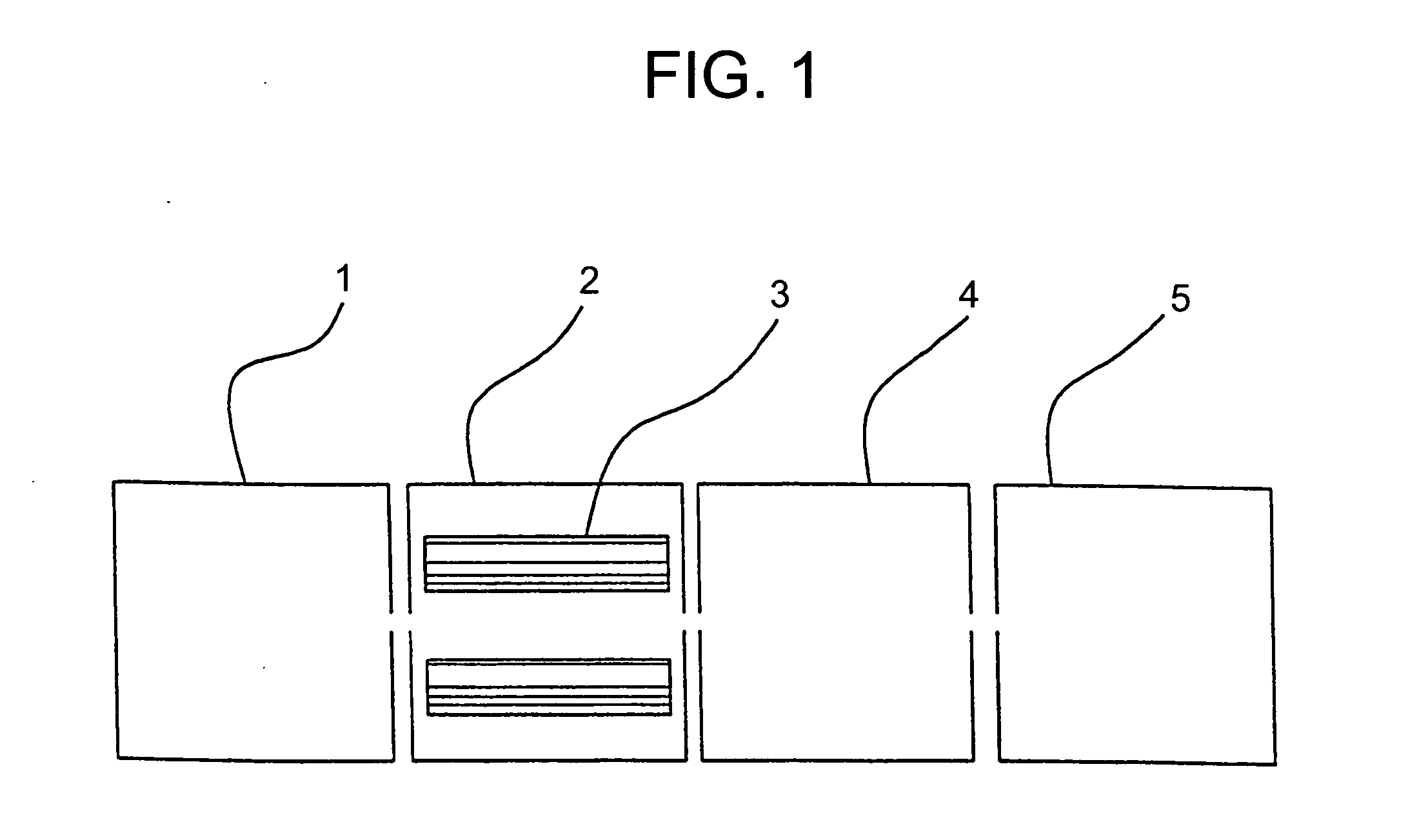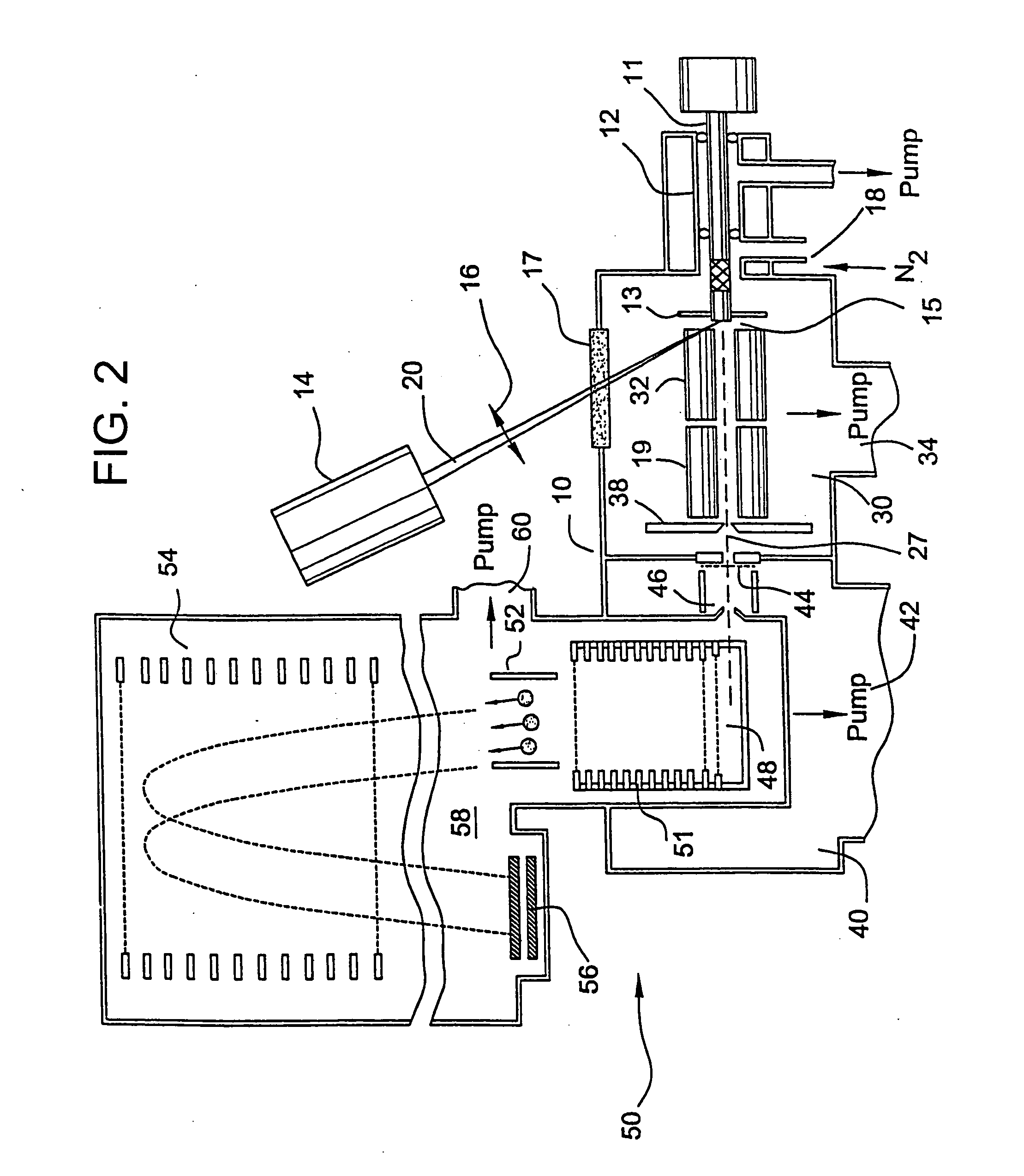Spectrometer provided with pulsed ion source and transmission device to damp ion motion and method of use
a technology of pulsed ion source and mass spectrometer, which is applied in the field of mass spectrometers and ion sources there, can solve the problems of low sensitivity, troublesome tof mass spectrometer, and low sensitivity, so as to reduce the amount of fragmentation of molecular ions, reduce fragmentation, and reduce the effect of fragmentation
- Summary
- Abstract
- Description
- Claims
- Application Information
AI Technical Summary
Benefits of technology
Problems solved by technology
Method used
Image
Examples
Embodiment Construction
[0049] The first embodiment shown in FIG. 1 is a block diagram of a general mass spectrometer system. Here 1 represents any sort of pulsed ion source (for instance MALDI), 2 is a collisional focusing chamber or region filled with a buffer gas and with a multipole 3 driven at some RP voltage. This is followed by an optional manipulation stage 4 and then a mass analyzer 5. The collisional ion guide 3, in accordance with the present Q invention, spreads the pulsed ion beam in time, and improves its beam quality (i.e. space and velocity distributions) by damping the initial velocity and focusing the ions toward the central axis. The beam is then quasi-continuous and may enter an optional manipulation stage 4, where ions can be subjected to any sort of further manipulation. Finally the resultant ions are analyzed in the mass analyzer 5.
[0050] A simple example of further manipulation in stage 4 is dissociation of the ions by collisions in a gas cell, so that the resulting daughter ions c...
PUM
 Login to View More
Login to View More Abstract
Description
Claims
Application Information
 Login to View More
Login to View More - R&D
- Intellectual Property
- Life Sciences
- Materials
- Tech Scout
- Unparalleled Data Quality
- Higher Quality Content
- 60% Fewer Hallucinations
Browse by: Latest US Patents, China's latest patents, Technical Efficacy Thesaurus, Application Domain, Technology Topic, Popular Technical Reports.
© 2025 PatSnap. All rights reserved.Legal|Privacy policy|Modern Slavery Act Transparency Statement|Sitemap|About US| Contact US: help@patsnap.com



